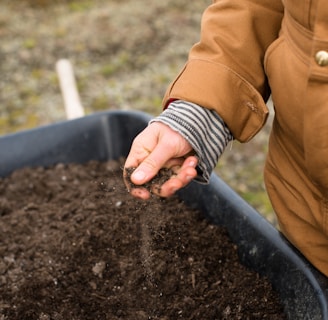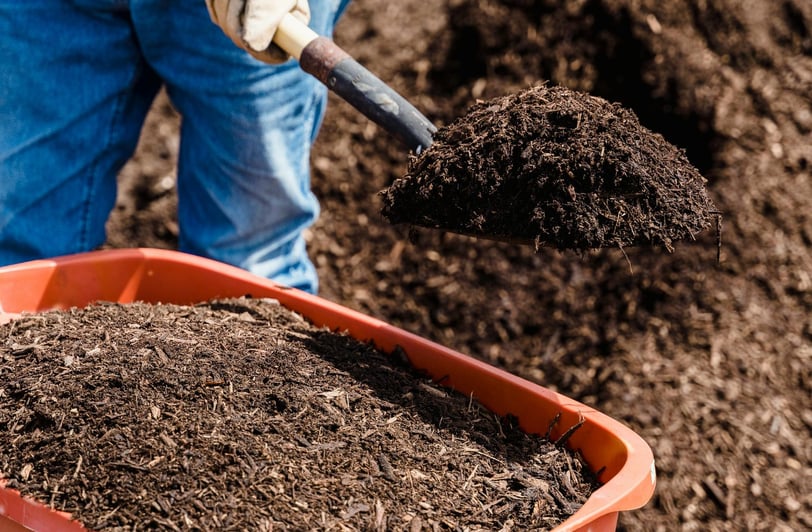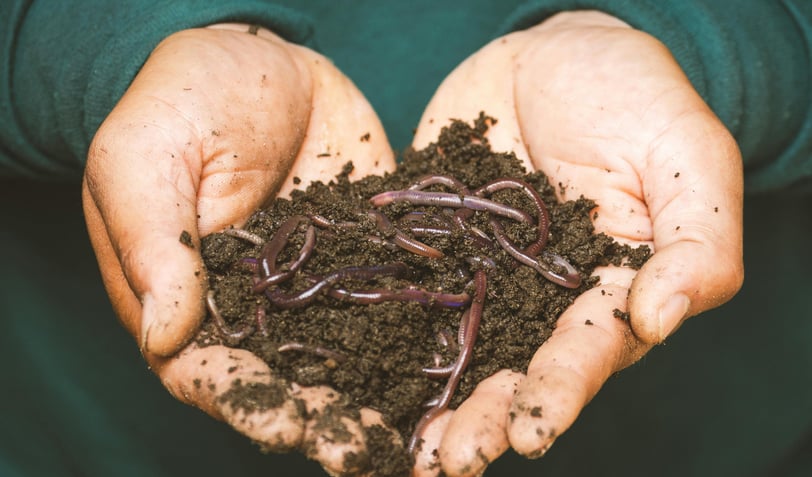Improving Your Garden’s Soil Health: Tools and Techniques
Healthy soil is the foundation of a thriving garden. Whether you're cultivating a vegetable patch, growing flowers, or landscaping, soil health directly impacts the growth, yield, and overall vitality of your plants. Often overlooked, soil health deserves attention for its role in water retention, nutrient supply, and creating a balanced ecosystem for microorganisms. This detailed guide explores tools, techniques, and actionable tips to enhance your garden’s soil quality, ensuring vibrant and productive plants.
GARDENING TIPS & TOOLS
12/6/20245 min read


Why Is Soil Health Important?
Soil health isn't just about texture or color—it encompasses its ability to sustain life. Healthy soil is rich in organic matter, teeming with microorganisms that convert nutrients into forms plants can absorb. It has the right pH balance, good structure, and sufficient aeration to encourage root growth. Poor soil leads to stunted plants, reduced yields, and increased vulnerability to pests and diseases. By investing in soil health, you improve your garden’s overall resilience and long-term productivity.
1. Start with Soil Testing: Understanding Your Garden’s Foundation
Before implementing any improvements, understanding the condition of your soil is essential. Soil testing helps identify nutrient deficiencies, pH imbalances, and organic matter levels. It allows you to make targeted amendments instead of blindly adding fertilizers or compost.
How to Test Soil:
Use a DIY soil test kit to quickly assess pH levels and basic nutrients such as nitrogen, phosphorus, and potassium.
For detailed results, consider professional testing services that analyze micronutrients and soil composition.
Understanding whether your soil is sandy, loamy, or clay-based will also help determine its water retention and drainage capabilities.
The Luster Leaf 1601 Rapitest Soil Test Kit is an affordable, easy-to-use tool for quick testing, while the Soil Savvy Test Kit provides a more comprehensive analysis.


2. Composting: Turning Waste into Black Gold
Composting is one of the most effective ways to improve soil health naturally. Compost enriches the soil with organic matter, enhances water retention, and stimulates microbial activity. It’s also an eco-friendly way to recycle kitchen scraps and yard waste.
Steps to Start Composting:
Choose a Compost Bin: Opt for a bin that suits your space. Tumbling composters are great for faster decomposition, while stationary bins work well for larger volumes.
Layer Organic Materials: Alternate between green materials (vegetable scraps, coffee grounds) and brown materials (dried leaves, cardboard). This ensures a balance of nitrogen and carbon.
Maintain Aeration: Regularly turn the compost to provide oxygen, which accelerates decomposition.
Affiliate Recommendation: The FCMP Outdoor Dual Chamber Tumbling Composter simplifies composting with its rotating design, making it ideal for beginners.


3. Aerating the Soil: Breaking Up Compaction for Better Growth
Compacted soil prevents roots from accessing oxygen, water, and nutrients. Aeration solves this problem by loosening the soil, improving its structure and drainage. It’s especially vital for clay-heavy soils or garden beds subjected to heavy foot traffic.
How to Aerate Soil:
Use a garden fork or manual aerator to break up compacted areas in small gardens.
For lawns or larger spaces, consider mechanical aerators that remove soil plugs, allowing air and nutrients to penetrate deeper.
Over time, soil can become compacted due to foot traffic, heavy rain, or regular gardening activities, which restricts airflow and root growth. The frequency of aeration depends on your soil's condition:
For dense or clay-heavy soils, aeration may be needed once a year to alleviate compaction and ensure plants can access vital nutrients and oxygen.
For lighter, sandy soils or less compacted areas, aeration is typically required every two years to maintain optimal soil health without overdoing the process.
By tailoring the aeration schedule to your soil type, you can avoid unnecessary labor and help your garden thrive.
Affiliate Recommendation: The Yard Butler Lawn Coring Aerator is a durable and effective tool for both garden beds and lawns.


4. Adding Organic Amendments: Feeding the Soil Naturally
Organic amendments are crucial for improving soil fertility and structure. Unlike chemical fertilizers, these amendments work with the soil's natural ecosystem, providing nutrients and encouraging microbial activity.
Common Organic Amendments:
Compost: Enriches soil with nutrients and improves moisture retention.
Manure: Provides a rich source of nitrogen and organic matter but must be aged to avoid burning plants.
Worm Castings: A highly concentrated organic fertilizer that enhances soil texture and nutrient content.
Bone Meal and Blood Meal: Target specific nutrient deficiencies, such as phosphorus or nitrogen.
When adding amendments, mix them into the top 6–8 inches of soil for maximum effectiveness.
Affiliate Recommendation: The Wiggle Worm Soil Builder Earthworm Castings is an excellent organic option for boosting soil health.


5. Mulching: Protecting and Nourishing Your Soil
Mulching involves covering the soil surface with organic or inorganic materials to protect it from erosion, temperature fluctuations, and weed growth. Organic mulches, such as straw, bark, or leaves, also decompose over time, adding nutrients back into the soil.
Benefits of Mulching:
Retains soil moisture by reducing evaporation.
Prevents weed growth, reducing competition for nutrients.
Regulates soil temperature, protecting roots from extreme heat or cold.
Spread a 2–3 inch layer of mulch around your plants, keeping it a few inches away from stems to prevent rot.
The EZ-Straw Seeding Mulch is easy to use and biodegradable, making it a great choice for gardens.


6. Managing pH Levels: Ensuring Nutrient Availability
Soil pH affects the availability of nutrients to plants. Most garden plants thrive in slightly acidic to neutral soil (pH 6.0–7.5). Adjusting pH ensures your plants can absorb the nutrients they need.
Adjusting pH Levels:
For acidic soil (low pH), add agricultural lime to raise the pH.
For alkaline soil (high pH), sulfur or organic matter can lower it gradually.
Test pH levels annually to maintain the desired range. Avoid drastic changes, as they can stress plants.
Affiliate Recommendation: The Bluelab Soil pH Pen provides accurate pH readings and is easy to use for both beginners and seasoned gardeners.
7. Encouraging Beneficial Microorganisms and Earthworms
Healthy soil is alive with beneficial organisms that break down organic matter and improve nutrient availability. Encouraging these natural helpers strengthens your soil’s ecosystem.
How to Boost Soil Life:
Avoid over-tilling, as it disrupts soil structure and microbial habitats.
Add compost and organic amendments to provide food for microorganisms.
Introduce mycorrhizal fungi to enhance root nutrient uptake.
Earthworms are particularly beneficial, aerating the soil as they tunnel and adding nutrients through their castings.
Affiliate Recommendation: The MycoBloom Mycorrhizal Fungi Inoculant supports healthy plant root systems and enhances soil life.


8. Cover Crops: Green Manure for Soil Enrichment
Cover crops, such as clover, rye, or vetch, are grown during off-seasons to protect and enrich soil. These crops prevent erosion, suppress weeds, and fix nitrogen into the soil. When tilled under, they add organic matter, boosting fertility.
Plant cover crops in late fall or early winter to prepare the soil for spring planting.
The True Leaf Market Cover Crop Seed Mix is an easy-to-grow blend for enriching your garden soil.


Conclusion: Build Healthier Soil for a Thriving Garden
Improving your garden’s soil health is an ongoing process that pays off with healthier, more productive plants. By testing your soil, adding organic amendments, and using tools like aerators and compost bins, you can create an environment where plants thrive naturally.
Investing in quality tools and maintaining consistent care ensures your soil remains fertile and resilient for years to come. Incorporate these techniques into your gardening routine, and watch your plants flourish with vibrant growth and abundant yields.
Happy gardening! 🌱